|
challenge to currently applied mathematical procedure for Cartesian coordinate transformations wherein "any origin repositioning from initial coincindence, alters coordinations wrt their own repositioned system." Whereas, it is proposed that coordinates and selected points stay fixed wrt to their own system,
during, or after any origin relocation; indeed, forever fixed in relationship to their own system. |
GIVEN |
SCENARIO / CONDITION |
MATH LOGIC |
coincident coordinate systems A with (x,y,z) and B with (x',y',z') |
 |
1 A (x,y,z) = B (x',y',z') |
A was relocated left 3 or B was relocated right 3 along x/x' direction |
 |
2 It is impossible to know which has occurred from the depiction. A (x,y,z) = B (x',y',z') |
origin relocation random |
 |
3 A (x,y,z) = B (x',y',z') |
select point P in A = (2,0,0) |
 |
4 .  |
select point P in A = (2,0,0) point P' in B = (2,0,0) |
 |
5 This is not a coordinate transformation between systems. |
method 1 origin relocation take diagram 5 and relocate B right 3 along the x/x' direction |
 |
6 point P' in B is mysteriously missing? 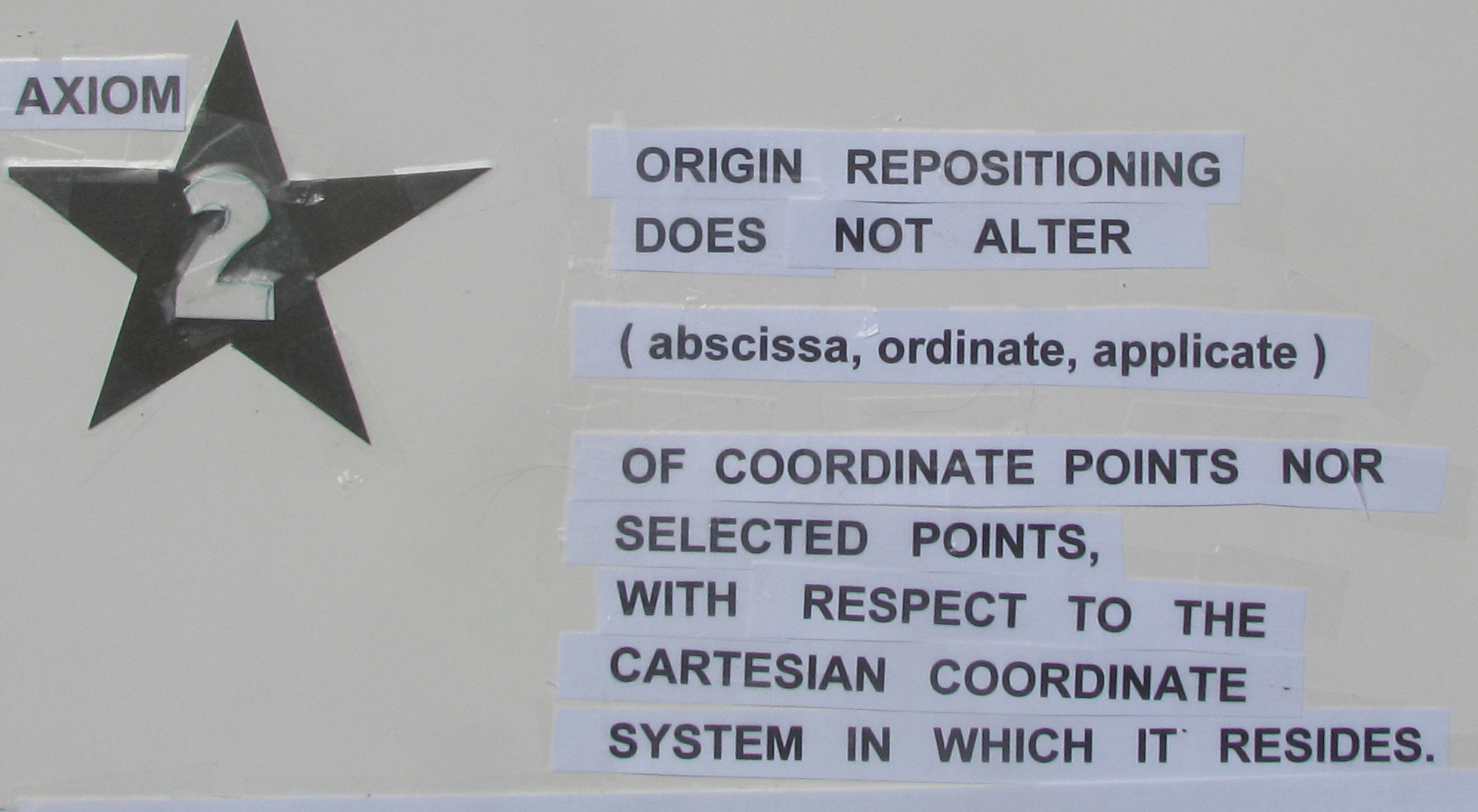 |
method 2 origin relocation take diagram 5 and relocate B right 3 or A left 3 along the x/x' direction |
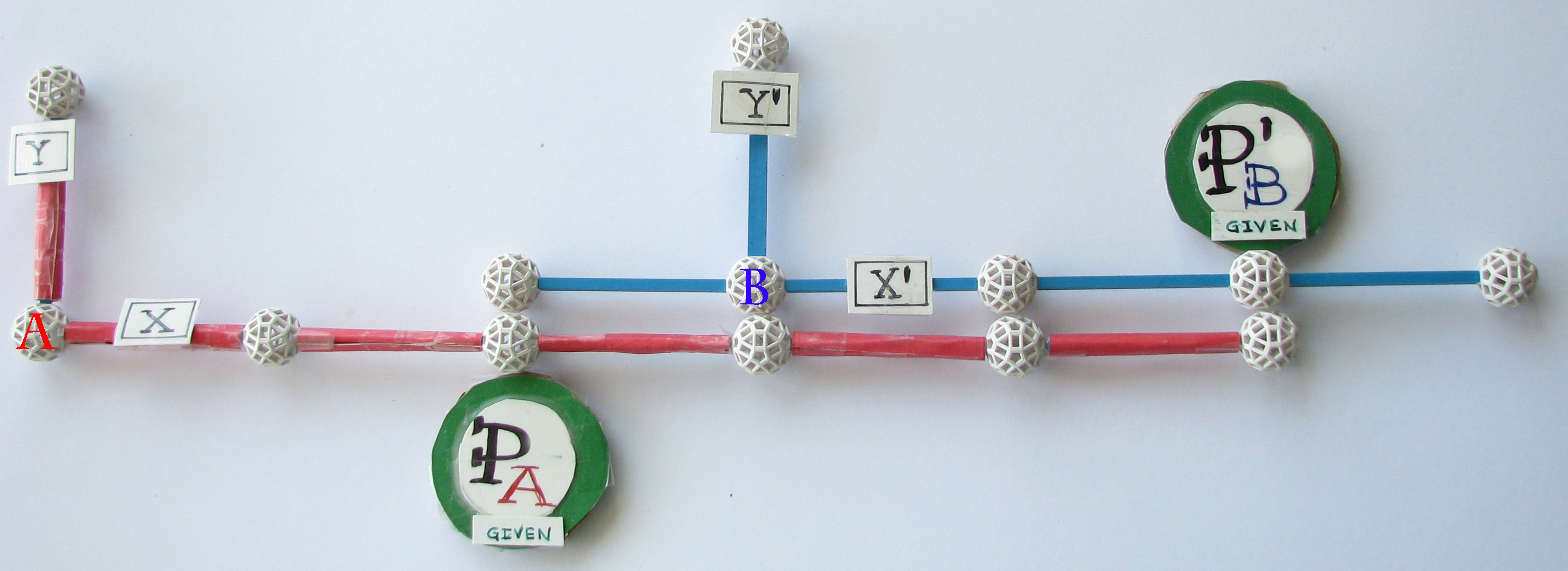 |
7
This is not a coordinate transformation yet...
not until an actual transfer between systems occurs. |
coordinate transformation related Physics terms |
 |
8
These are not pertinent to a
mathematical analysis given that Velocity x Time equals a purely mathematical relocation Distance. |
The transformation of selected points between systems.
Given

relocate A left 3 compared to relocate B right 3
transformation method 1 [ ignores axiom 2 ] |
transformation method 2 [ applies axiom 2 ] |
variant transformations dependending upon which
system is chosen as stationary B relocated right 3...A stationary commencing with depiction 6 the transformation between systems is...  |
invariant transformation independent upon which system chosen as stationary |
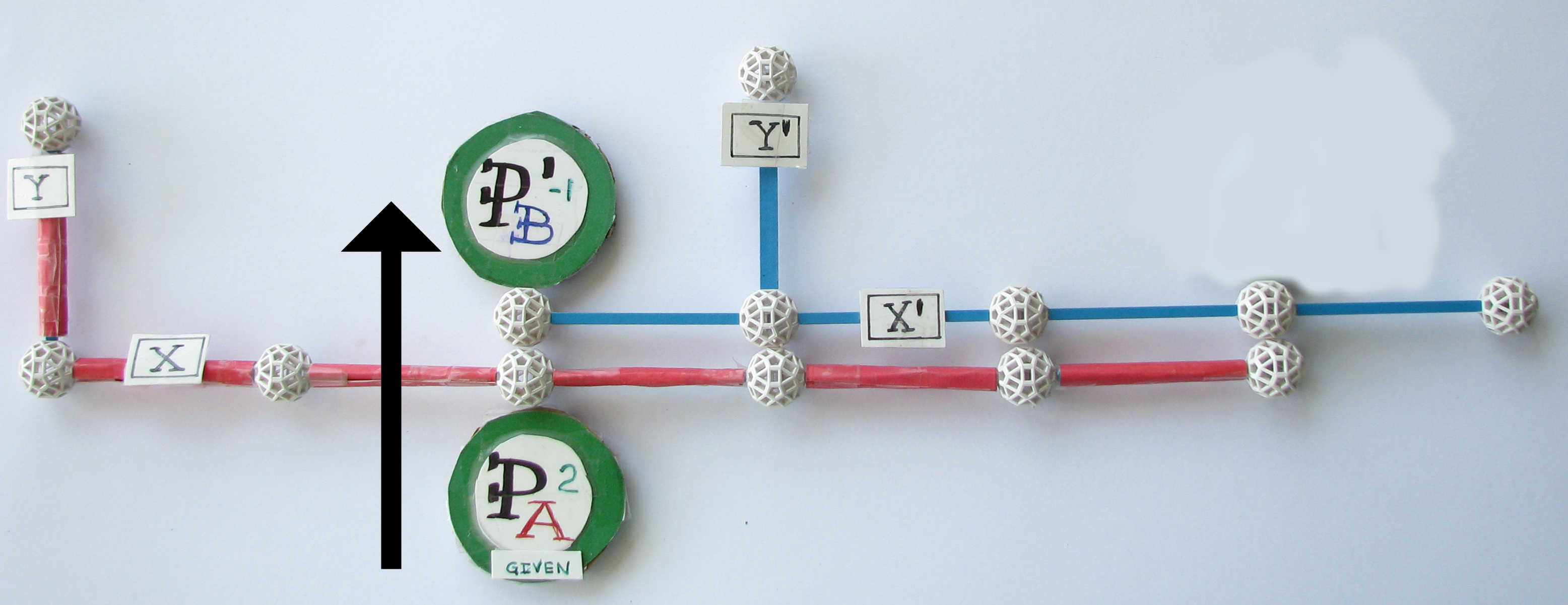 |
B relocated right 3 or A left 3 commencing with depiction 7 the transformation between systems is... 
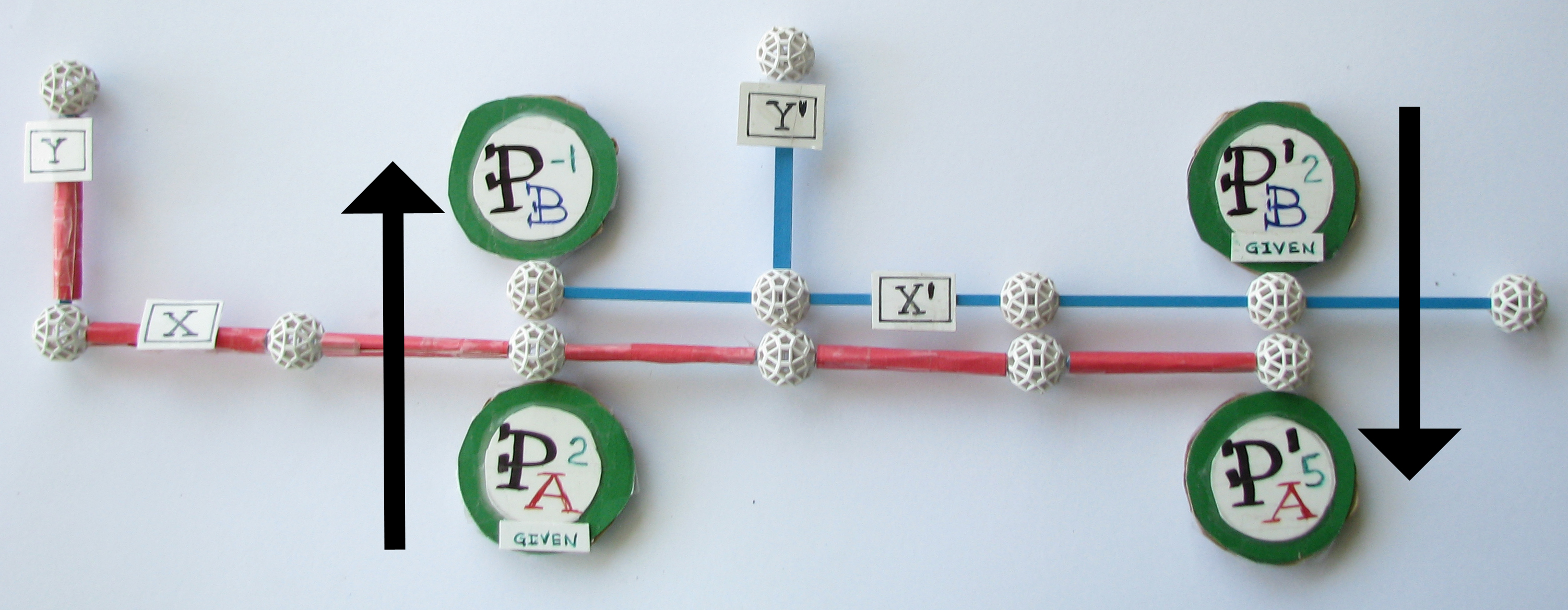 |
A relocated left 3...B stationary this time... it commences with the relocated singular point in the opposite system. 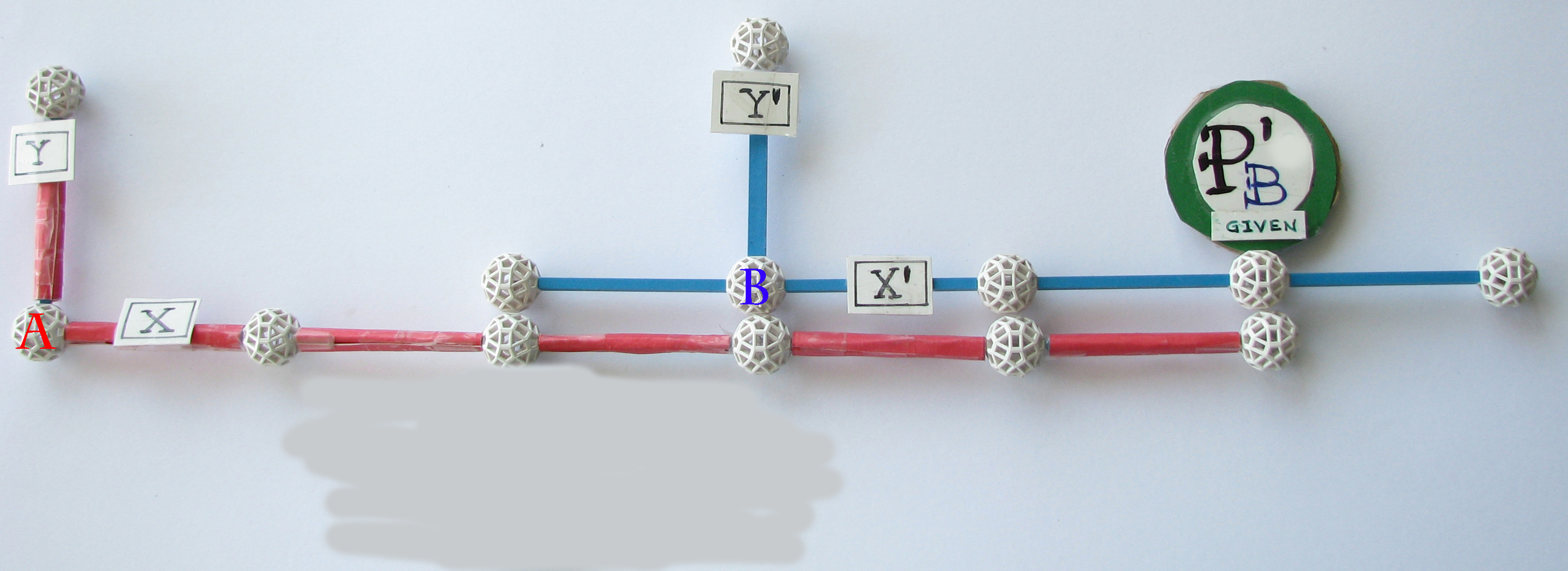 |
|
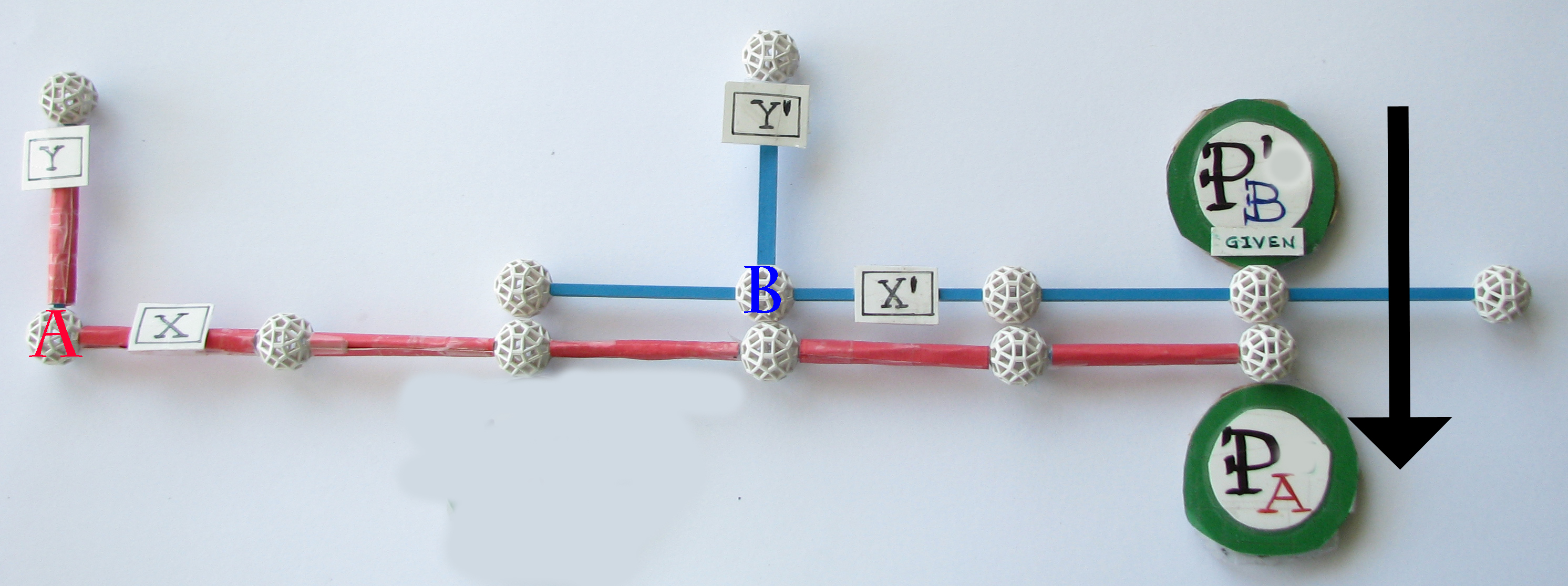 |

conclusion
method 1 variant transformation results
The value of P in A is dependent upon which system was relocated
IF A left 3, THEN P in A = 5 IF B right 3, THEN = P in A = 2
The value of P' in B is dependent upon which system was relocated
IF A left 3 = THEN P' in B = 2 IF B right 3 = THEN P' in B = -1
IF A left 3 = THEN P' in B = 2 IF B right 3 = THEN P' in B = -1
method 2 invariant transformation results
coordinates and selected points stayed fixed wrt their origin, P in A = 2 P' in B = 2,
regardless of origin relocation.
coordinates and selected points stayed fixed wrt their origin, P in A = 2 P' in B = 2,
regardless of origin relocation.
As well,
P in A TRANSFOMS to P in B - ( relocated distance ) P' in B TRANFORMS to P' in A + ( relocated distance )
Conclusion Galilean A left 3 is variant because that result is different than B right 3 results.
all rights reserved steve waterman February 13, 2012.
